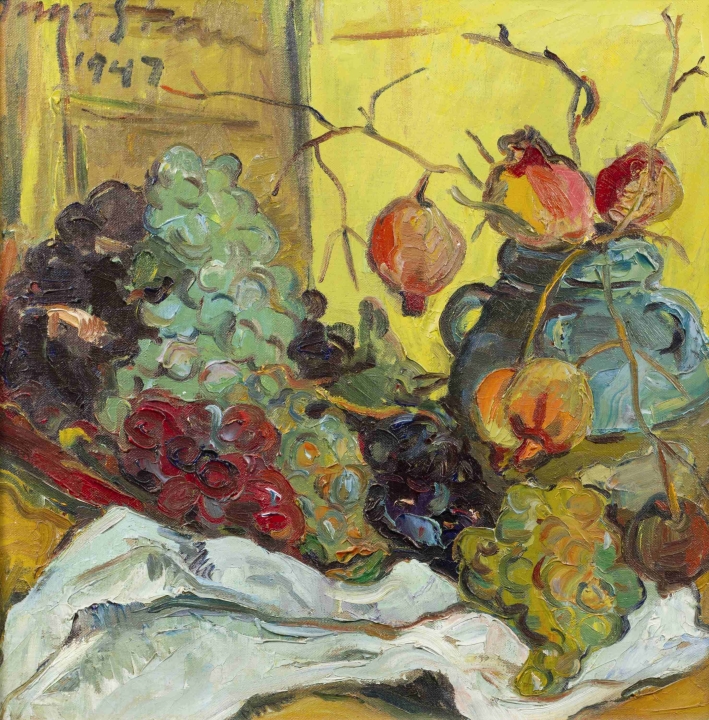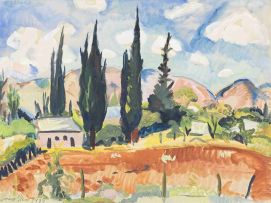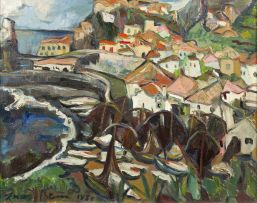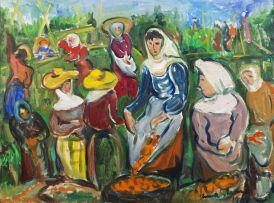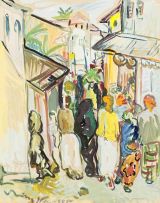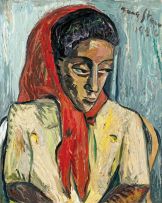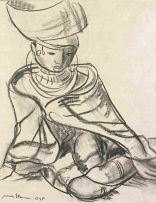South African Art, Jewellery and Decorative Arts
Live Auction, 8 October 2012
Session 3
Incl. Buyer's Premium & VAT
About this Item
signed and dated 1947; signed on the reverse
Notes
Irma Stern's paintings produced during the 1940s are considered by experts to be amongst her best works. According to leading academic, art critic and former Director of the Irma Stern Museum, Neville Dubow, "judged purely by the yardstick of dynamic painting - perceptual and sensual, rather than conceptual and intellectual, sheer picture-making, in fact - one could claim international stature for her work of the 1940s. Nationally ... there was no one to touch her in terms of her impact on the local scene."1 Painted following her return from Zanzibar in 1945, Still Life with Pomegranates has the hallmarks of a mature and confident artist.
For Stern, still life painting was a favourite genre as it constituted an arena in which she could indulge her love of food, ceramics and fabrics and her passion for colour and paint. As Marion Arnold has declared, "her still life paintings comprise some of her most sumptuous and sensual images".2 This is a prime example. Here pomegranates arranged in a blue jar are silhouetted against a brilliant lime green that accentuates the rich reds, oranges and cyclamen pink of the fruit and the graphic elegance of their fluidly-drawn stalks. With a juicy application of magenta, indigo, cobalt and sap greens, bunches of red, black and green grapes are depicted piled high and cascading across the canvas in an abundance that defies any post-war austerity.
Through her skilled use of impasto, Stern achieves a luscious paint quality, ascribing to the fruit and other objects a strong physicality that makes them convincingly real. Stern's mature grasp of composition is revealed in the way the white fabric leads the eye to the vase of pomegranates, the stalks arch over to the fruit and the grapes flow to the foreground, setting up a circular motion that invites us into the painting and holds our interest through jewel-like colours and textural contrasts.
The jar is probably a Chinese martaban which Stern acquired for her own collection and which is currently in her old house, now the UCT Irma Stern Museum (catalogue number 534). With its brownish slip and heavy copper-green glaze, it stands 21 centimetres high. Not only were these favoured objects prized for their artistic attributes and the formal qualities they bring to her paintings but they are evidence of a cultured life, spent in the pursuit of art and artefacts of historical, cultural and aesthetic significance. This jar was clearly a favourite of the artist as it was used in several still lifes including Lilies, sold by Strauss & Co in November 2010 for R8 3554 000.
1. Neville Dubow, Irma Stern, C. Struik Publishers, Cape Town, 1974, page 20.
2. Marion Arnold, Irma Stern: A Feast for the Eye, Fernwood Press, Cape Town, 1995, page 125.
